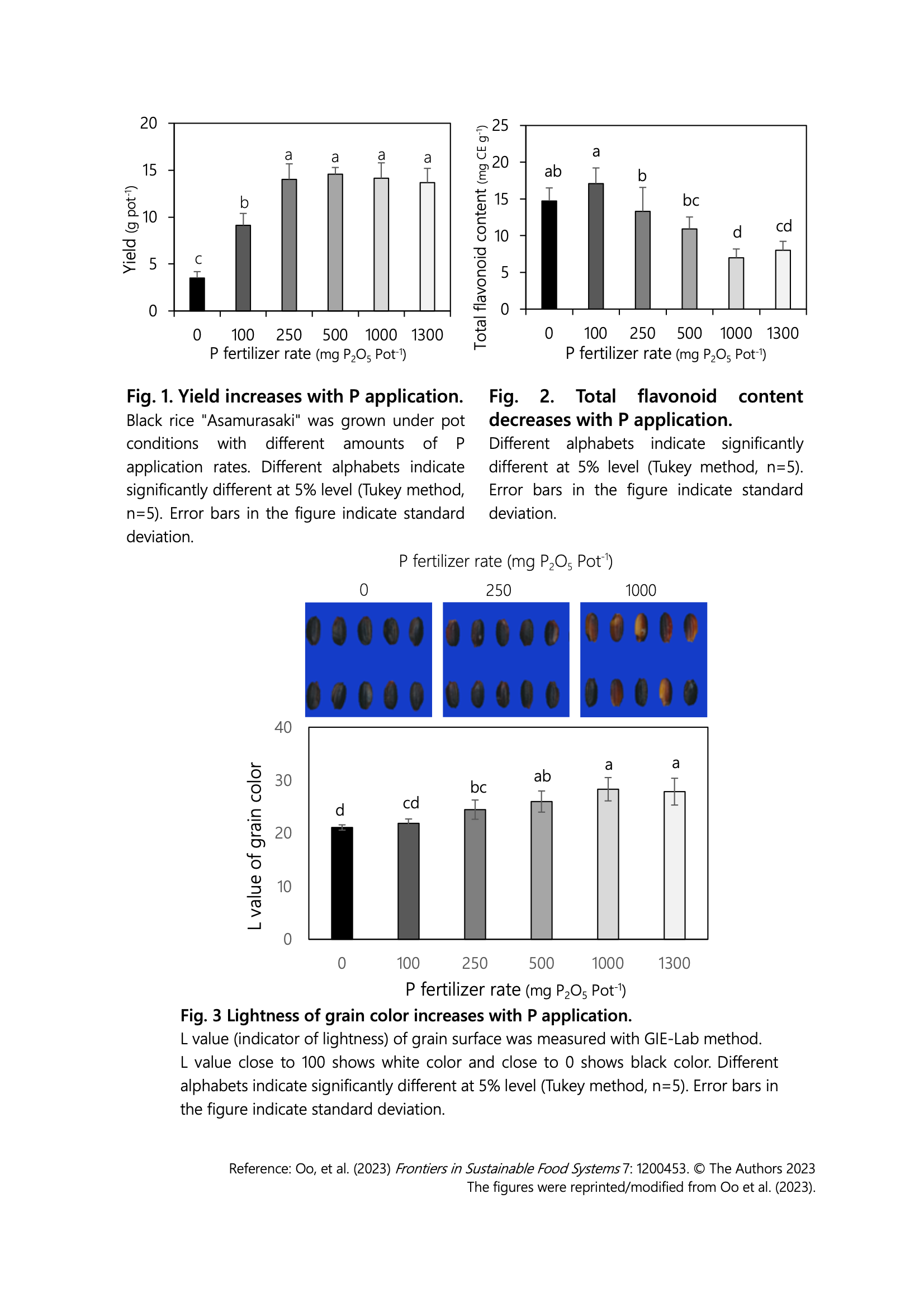Optimum phosphorus fertilizer management can balance productivity and quality of black rice
Description
The Southeast Asian region has a rich tradition of utilizing black rice for its medicinal properties. Black rice pericarp contains various secondary metabolites such as anthocyanins, which are known for their antioxidant effects including restoring liver function and preventing dementia. In tropical areas such as Laos, where black rice is commonly consumed, soils typically lack phosphorus (P), an essential nutrient for crops. Therefore, external P supply is crucial to boosting productivity. However, with rising fertilizer costs and the adoption of labor-saving rice cultivation techniques, it is vital to determine the optimal P fertilization levels. Additionally, understanding the impact of P fertilization on flavonoid accumulation, which contributes to antioxidant properties, is necessary. This study aims to conduct pot trials using P-deficient soil to evaluate how soil P availability affects black rice yield and flavonoid content, which serves as an indicator of antioxidant capacity. The goal is to identify the optimal P fertilization strategy to balance productivity and quality in black rice cultivation.Pot trials conducted on volcanic soils with limited P availability revealed that P fertilization enhances yield up to a certain point but becomes excessive beyond 250 mg P2O5 pot-1 (Fig. 1). Exceeding this threshold not only fails to further increase yield but also reduces flavonoid content (Fig. 2) and affects the rice's appearance by lightening its color (Fig. 3). Therefore, P fertilization beyond 250 mg P2O5 pot-1 compromises both flavonoid accumulation and appearance traits.
These findings underscore the importance of careful P fertilization management in P-deficient soils. While it boosts black rice yield, excessive fertilization negatively impacts flavonoid content and appearance quality. Thus, adopting proper P fertilizer management practices is essential for producing high-value black rice that maintains a balance between productivity, functionality, and appearance quality. This knowledge can guide cultivation practices tailored to diverse soil conditions in different regions.
Figure, table
- Research project
- Program name
- KAKEN
- Term of research
-
FY2021-2023
- Responsible researcher
-
Aung Zaw Oo ( Crop, Livestock and Environment Division )
Asai Hidetoshi ( Crop, Livestock and Environment Division )
KAKEN Researcher No.: 30599064Takai Toshiyuki ( Crop, Livestock and Environment Division )
Tanaka Pariasca-Juan ( Crop, Livestock and Environment Division )
Marui Junichiro ( Biological Resources and Post-harvest Division )
MIERUKA ID: 001765Nakahara Kazuhiko ( Biological Resources and Post-harvest Division )
SAITO Hiroki ( Tropical Agriculture Research Front )
Kawamura Kensuke ( Social Sciences Division )
Win Khin Thuzar ( National Agriculture and Food Research Organization (NARO) )
ORCID ID0000-0002-4834-078X - ほか
- Publication, etc.
-
Oo et al. (2023) Front. in Sustain. Food Syst. 7:1200453.https://doi.org/10.3389/fsufs.2023.1200453
- Japanese PDF
-
2023_B05_ja.pdf387.18 KB
- English PDF
-
2023_B05_en.pdf206.39 KB
* Affiliation at the time of implementation of the study.

